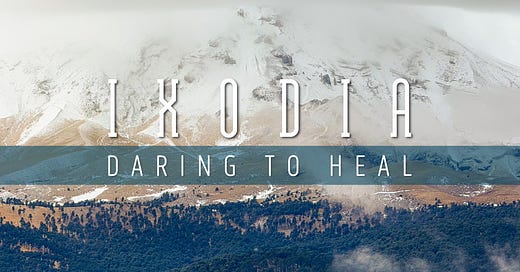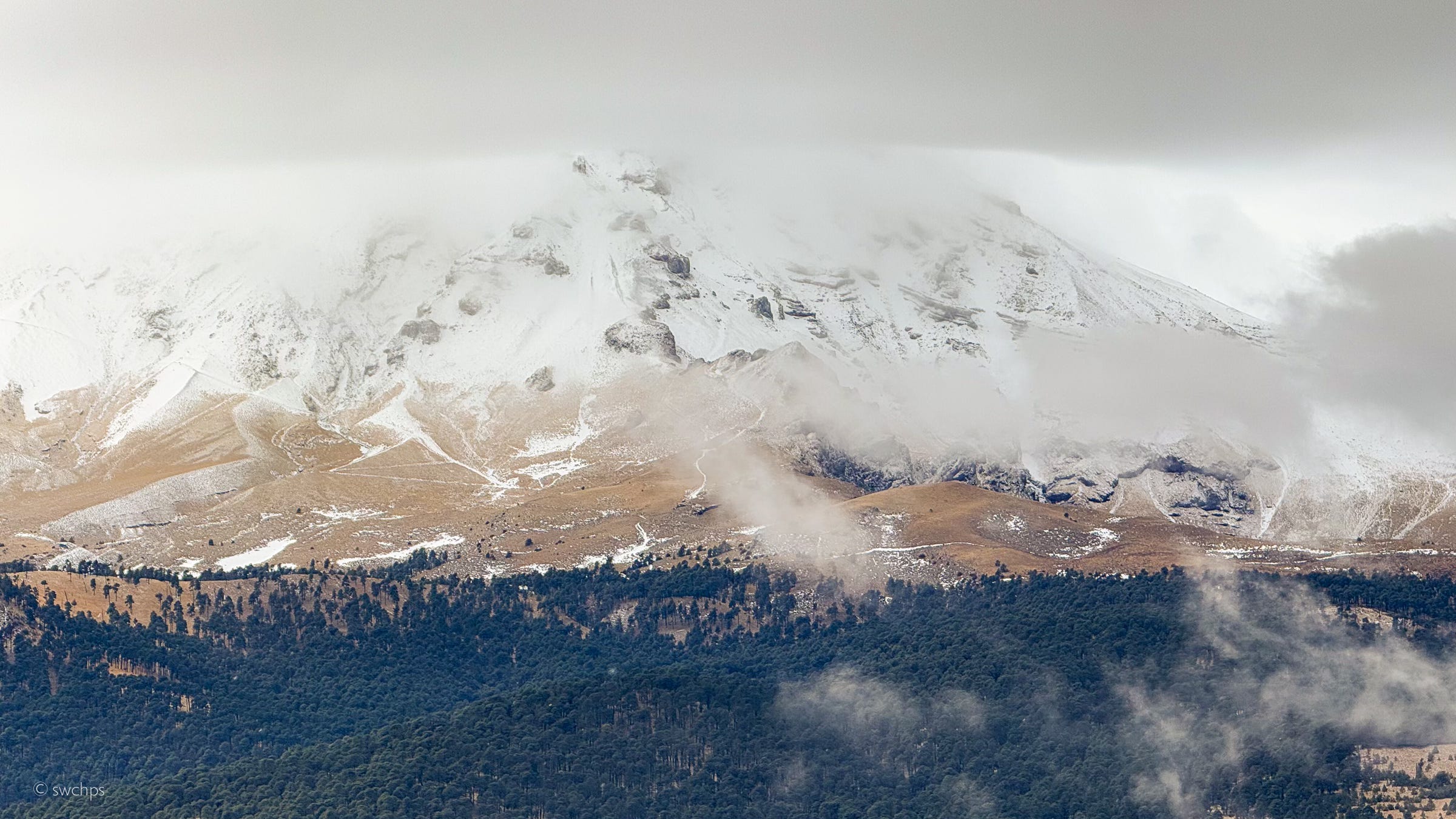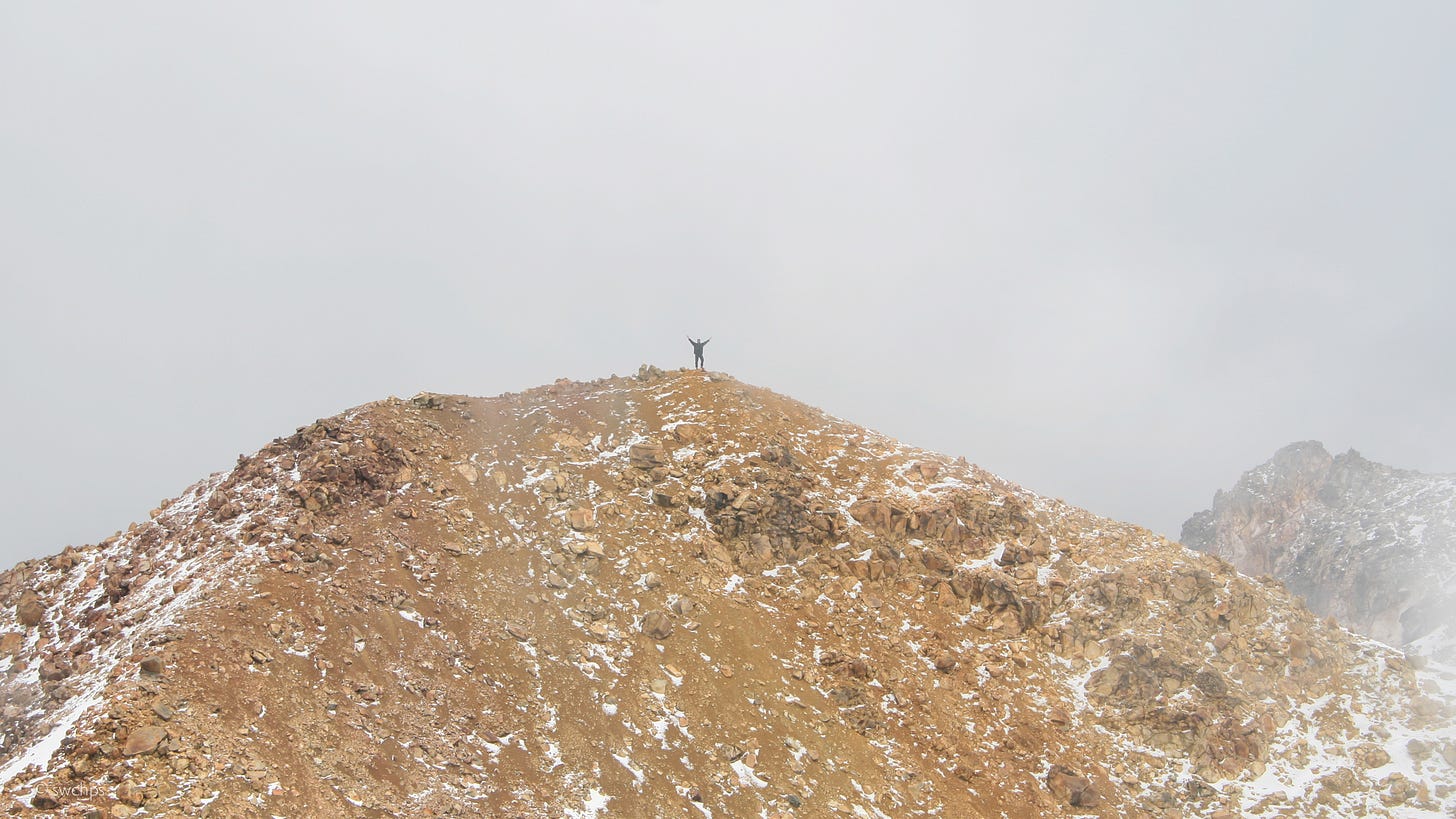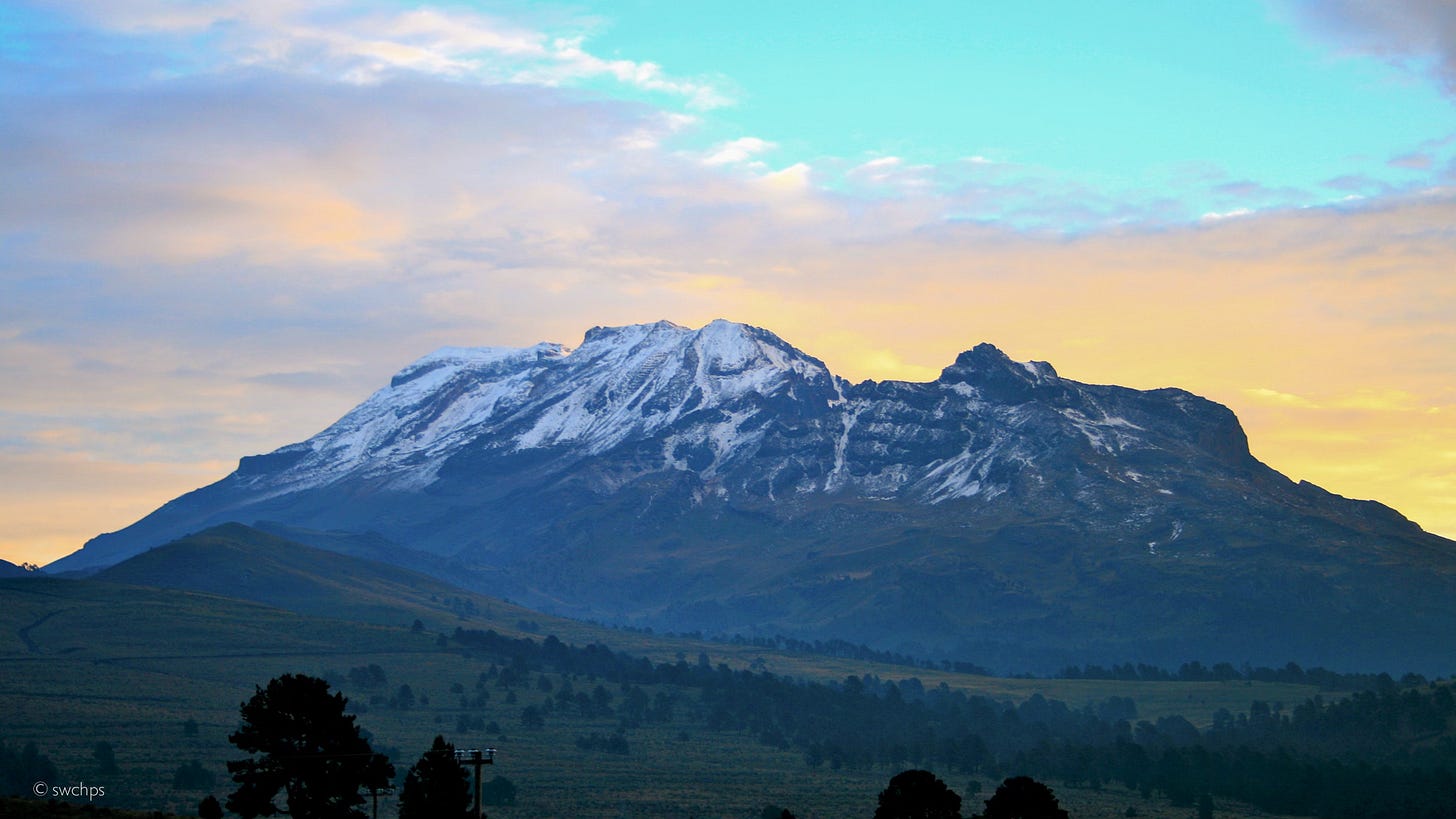This is the second part in a series. See parts I and III in the links below.
Disclaimer: The information presented throughout this Substack series does not constitute medical advice. Consult your healthcare professional to assess your own health condition.
Impostor Syndrome
By early 2025, I felt ready to start a new, healthy chapter of my life. Yet, I needed to test myself, confirm for myself that I was truly healthy again. I needed proof that I was back to being me — at least partly.
Nowadays, when someone asks me how I’m doing, my usual short answer is, “I’m doing much better. Thanks for asking.” Clearly, that’s not nearly enough, and the person may inquire, if only with their expression, “Tell me more!” Should I say any more? The story is complicated. What if I said:
“Well, as you may know, tick-borne pathogens can persist despite anti-infective therapies. Why? Their metabolism is adapted to switch from a latent phase, while transiting through the tick, to an active phase, in which they reproduce within the — yummy — host’s tissues. The same mechanism protects them when the environment within the host turns adverse: for instance, when immune cells and anti-infective molecules attack them. They hide in “gated communities” of germs surrounded by a substance called biofilm. Borrelia, the spirochete that causes Lyme disease and the most persistent of all known tick-borne pathogens, can even assume “spore-like” forms, thus going into latency for months — or even years. By hiding in multiple ways, tick-borne pathogens can survive therapy and reactivate when the environmental pressure lessens. That’s why it can take many months and years of cyclic treatment to clear these infections, at least to a point where the immune system is ready to take charge and keep them at bay.
“Nowadays most days, I feel as though I can pretend to be back in good health and — almost — back to feeling “normal.” And that’s saying something, because my “normal” is not at all passive. I like to stay very engaged. All day, if I’m not doing this, I want to do that… Today, if I were to evaluate my health on a scale of 1 to 10 (1 being irrevocably bedridden and 10 feeling at my best), in comparison with 2020–21, when I was between 1 and 3, and with 2022–23, when I moved up the scale to about 4–6 — for the past year, most days, I’ve felt somewhere between 7 and 8. Not bad, right?
“Nowadays, physically, for example, I can run up a flight of stairs or kneel, carefully, without feeling pain in my knees later. Or I can exercise for about forty-five minutes and still have stamina to cope with the rest of the day. Just a couple years ago, that was not the case. As for my mental stamina, most days, I can work all through the day, up to ten hours or so, multitasking — editing text, emailing, calling, texting, doing research online, filing documents — and still be able to peek out the window and capture a photo of the sunset. Another measure of my cognitive health’s improvement is being able to keep up a conversation for more than a couple of hours, focused and responsive. Emotionally, I feel more in control and capable of halting strong reactions, quieting myself, and redressing a tense situation more quickly and lightly. All that is to say: I’m almost back to ‘normal.’”
How much would the person asking “how am I” want to hear?
If I’m being completely honest, I’d say that, most of the time, I feel as though I’m pretending to be “normal.” There’s something of an impostor syndrome going on. Inside my skin, inside my skull, where no one can see, I’m always putting up an extra effort just to appear “normal.” For instance, cognitively, I must force myself to stay present, refocusing again and again, every few minutes, during a typical two-hour work session. Or, physically, though you might not even notice, I know I must move with great care to avoid straining my joints, especially my wrists — even with simple tasks, like lifting my laptop off the table. I must continue to watch what I eat and avoid all sorts of inflammatory foods — and eat on a consistent schedule. Getting off the rails can make me crash. It doesn’t happen very often, but sometimes, intrusive melodies play over and over in my head, or hyperawareness of bodily sensations, like my armpits feeling strangled by my T-shirt, keeps me rolling around in bed until three in the morning. If that happens, of course, the next day, I’m unable to keep up appearances — it hurts to even think. But no one needs to know that. I’ll be as “normal” as I can. Yet in the background, behind the “normal me” who feels 7–8, there’s a “little me” that wants to drag me down to 6. To get back to 7–8, I must compensate with a constant, secret, little extra effort and personal care. But I can do it!
Nowadays, perhaps one of my main malaise triggers is: cold. For some reason, when the temperature starts cooling down in the evening, my body stills lags in turning up the “furnace” to generate the necessary compensatory heat. I can get very cold within ten minutes, and then my cloak of “normalcy” falls away: my speech slows down and disarticulates, revealing the underlying frailty. If you could see inside my messenger bag, among a number of quick remedies that I always carry with me, you’d find a small woolen hat. You don’t know how many times that little hat has saved me. I put it on as soon as I start feeling cold, which can even happen after sitting for a few minutes in an air-conditioned room. So you see, it’s all a little quirky, but one can learn to manage it.
Although I may fake a little “normalcy,” I think that’s all right. While underneath the surface, I know I still need to be more careful, watchful, measured, disciplined, and structured than “normal,” I think the little extra effort I have to put up to appear — almost — “normal” is gradually enhancing my resilience, for real. Could it be a case of “fake it ’til you make it”?
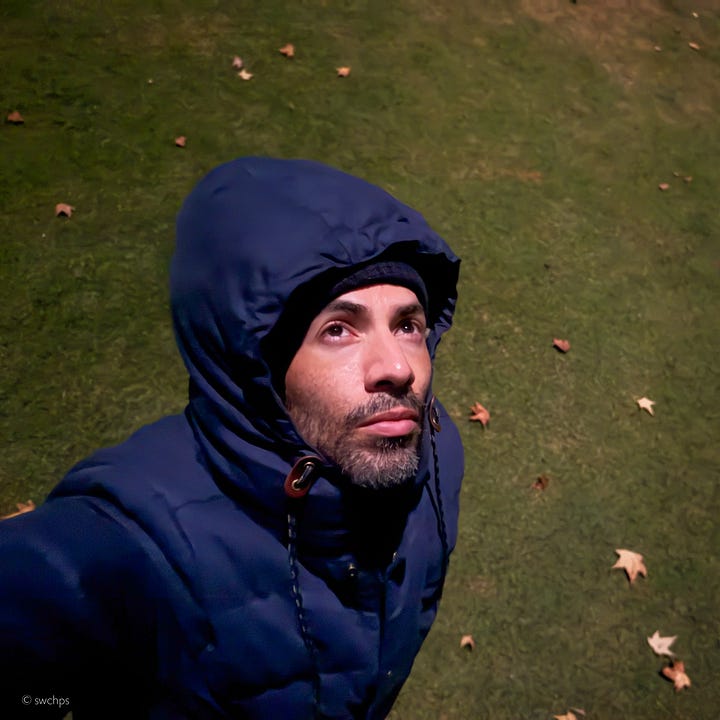
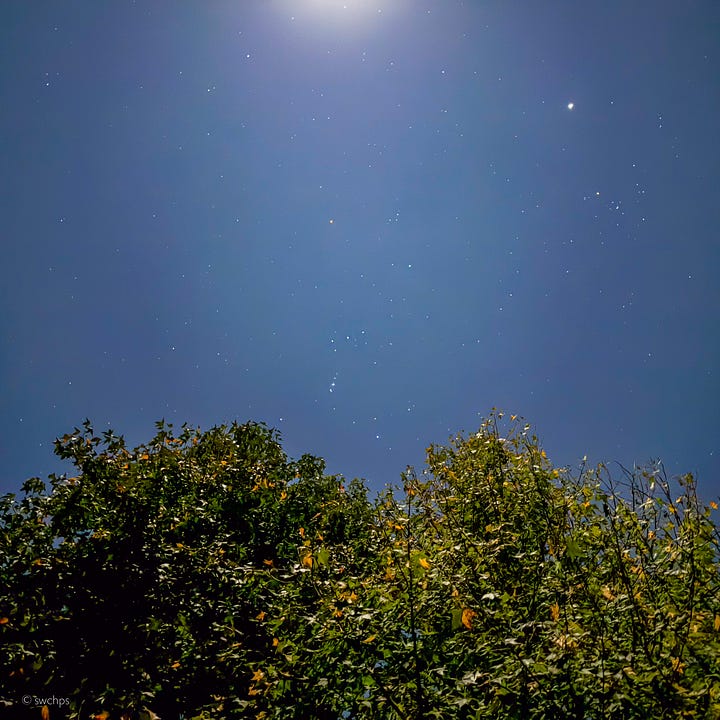
White Lady
To test myself, this past January, 2025, my partner, Zo, and I went for a daylong, very-high-altitude hike at the Iztaccíhuatl volcano, near Mexico City.
Iztaccíhuatl (pronounced ee-zta-XEE-wa-tl) means White Lady in the indigenous Nahuatl language. The volcano has been called so from the time of the Mexica because, from the point of view of the Valley of Mexico City, its contours resemble a goddess-like woman lying on the rocks, elevated above the clouds. Not so much anymore, but Iztaccíhuatl used to look white all year round, encrusted with the timeless crystals of perennial glaciers.
The Iztaccíhuatl lies at the center of a forty-mile-long triad of consecutive volcanoes, the Sierra Nevada Volcanic Range, with the most ancient of the three, Tláloc-Telapón, to the north, and the youngest, Popocatépetl, to the south. These volcanoes are three successive generations of geologic formations: Tláloc-Telapón was erupting between 2 to 1.5 million years ago; Iztaccíhuatl continued the family line, erupting between 1 million and 500,000 years ago; and Popocatépetl, the youngest, came to life about 300,000 years ago — and still erupts these days, from time to time. That’s why the Mexica named it Popocatépetl, or Smoking Mountain. But despite the Popocatépetl’s exhaling and exploding beside her, the White Lady sleeps with an eternal slumber
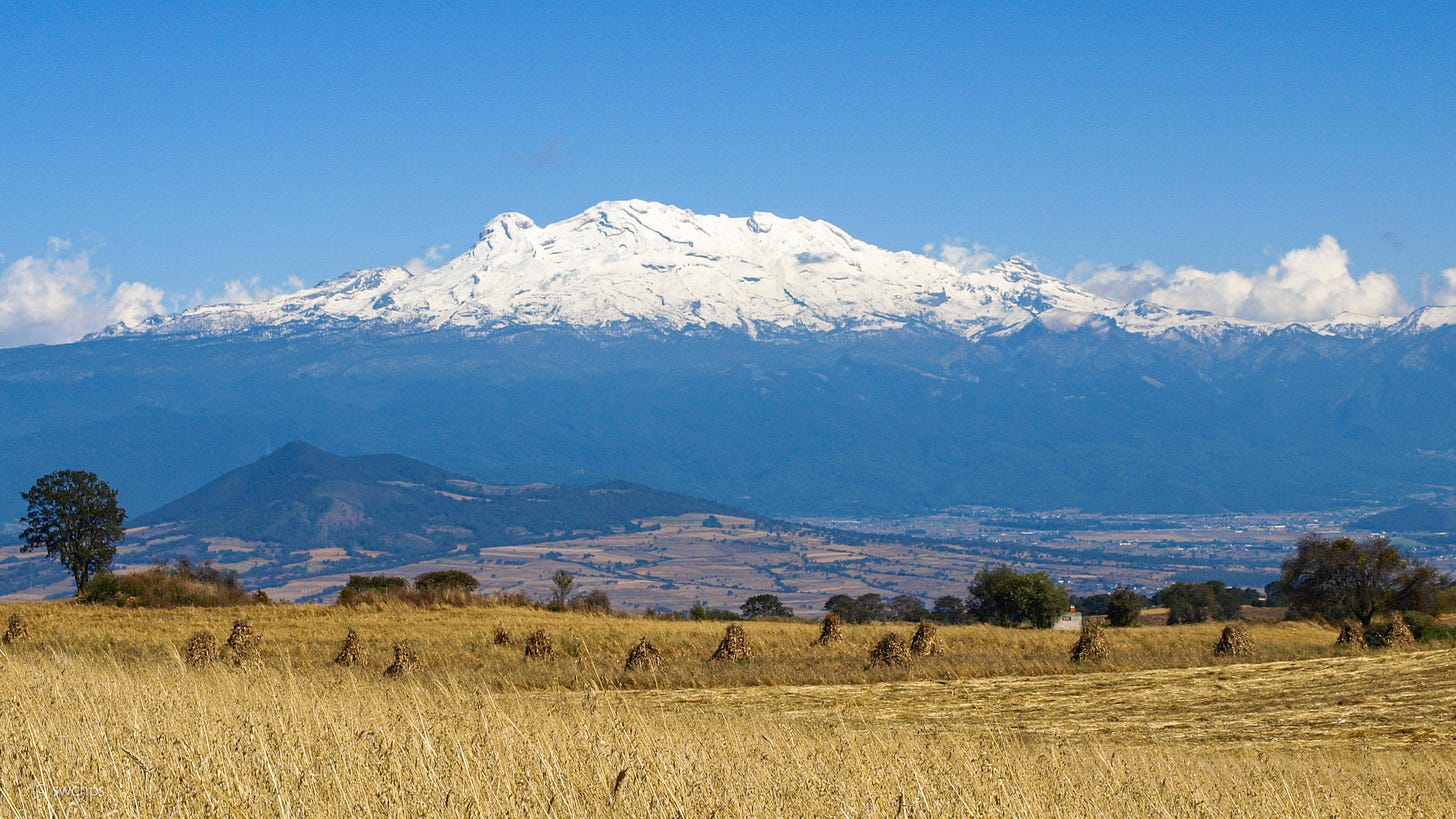

Iztaccíhuatl’s summit is the third highest peak in Mexico and the eighth highest in North America, at an elevation of 17,160 feet. Its ancient companion Popocatépetl’s summit, eleven miles away, rises 600 feet higher, making it the second highest peak in Mexico and the fifth highest in North America. While Popocatépetl has a symmetrical conic shape with a single crater, Iztaccíhuatl has an elongated shape due to a series of eruptions on adjacent craters that formed three peaks: Iztaccíhuatl’s Knees (16,700 feet), Head (17,000 feet), and Chest (17,160 feet). According to one climbing guide writer, Iztaccíhuatl’s trails offer a “difficult scramble with consistently rough terrain, loose scree slopes, ice and glacier, route-finding demands, and many hours of hiking at very high altitude.”
Together with her majestic companion, Popocatépetl, Iztaccíhuatl is a key feature in the Mexican horizon and imaginary. Fifty miles from Mexico City, the volcanic range is a celestial realm that from the time of the Mexica has been regarded as the abode of the god of rain, Tláloc, who’s highly revered for his life-giving boon and feared for his ravaging lightning. For the locals, since ancient times, people’s relationship with the living volcanoes has been preserved by the graniceros (hail-makers), whose sacred propitiations offer emancipation from and wisdom over all things mundane — bringing about life, healing, and protection against all sufferings. A modern granicero, Moisés Vega, has said, “Popocatépetl is our father and Iztaccíhuatl is our mother. They are providers of water, and we are not afraid of them. On the contrary, their exhalations are blessings because they give us life.” (Read source)
Hail-Maker
I was ten years old when I first visited the Izta-Popo National Park with a large Boy Scouts delegation. The teenagers climbed the Popocatépetl while us children played games on its slopes. Never in my life had I spent a night at thirteen thousand feet. I barely slept. Yet, the next day, I remember the immense joy of running down steep, grassy slopes. I don’t think I’d ever run so fast in my life.
My second visit, the following year, was even more fortunate. I was one of eighteen children from all over Mexico who won a writing competition to be sponsored by the United Nations and the Mexican presidency on a five-day visit to the Izta-Popo National Park as part of the celebration of World Environment Day. We went to observe the degradation of the montane forest around the volcanoes caused by overexploitation by the paper industry, to learn about the government’s reforestation efforts — and to write a report for posterity. As we learned to admire the precious natural wealth protected by the national park, we were also given the opportunity to climb the skirts of the Popocatépetl, a two-mile path up to about fourteen thousand feet, just below where ashy trails turned into hardened glacial tracks. From up there, above the tree line, we had an unobstructed line of sight towards the rocky, icy slopes of the Iztaccíhuatl — or “Izta,” its affectionate nickname. I was mesmerized.
My dad began taking me to the Izta a year later. He was an experienced, although not a professional, climber who had walked this, his beloved volcano, ever since he was in high school and knew its pathways very well. He never climbed the Popo. He used to say that the Popo was an uninteresting climb: “It’s a smooth path upwards. People prefer it because it’s a higher summit, and it’s easier to climb. But the Izta is more intricate and beautiful.”
I must have been twelve when he initiated me into the intricate Izta’s trails. It was December, and the mountain was completely covered in snow, all the way down to its base. Walking the mountain was probably one of the things my father was most eager and happy to teach me — and I was most joyful to learn. It was during that first visit that I saw snow for the first time. Driving on the dirt road that leads to Izta’s base, I saw the white stuff by the roadside, asked my dad to stop, jumped out of the car, and threw my hands into the snow. I remember being fascinated by the crunching sound of my footsteps on the white, wonderful blanket — and terrified of walking horizontally across a forty-five-degree slope. Fascination and fear, with time, turned into love and worship. Ever since, the mountain has captivated me, and over the years that followed, I returned countless times, sometimes with my father, sometimes with one or more friends — whoever dared to join the ascent. I rarely went alone. I always extended an invitation to share in the beauty.
Before I got sick, I used to have a lot of stamina. I climbed the Izta at least once a year. Every time exhausted me to my limit, but I loved it. The more I climbed, the more stamina did I develop. But I never climbed as mere sport or looking forward to setting a record. I just walked and gave myself to the experience, as fully as I could. Up there, there were no mundane expectations, no philosophical dilemmas, not even the need for faith. The elements and the gods were all real, physical as well as ethereal, one and the same: wind or rock, lynx, falcon, or my own breath.
Climbers’ traditional ascent is a two-day hike up nine miles of rocky trails from the base (13,000 feet) to the summit (17,160 feet) and back. But I didn’t learn to climb with professionals. First, my father taught me how to be safe; then the mountain itself taught me how to walk. I remember once passing a group of professional climbers. They were crawling very safely up the icy slope, attached to each other by a rope, wearing shoe spikes and helmets and moving slowly with the help of ice axes. A few feet to their right, there was a small breach in the glacier where the ice was gently melting, and the slow dripping was sculpting a formation that resembled a shoe-width flight of stairs. When I found the “staircase,” I began speed-walking up it, quickly passing the climbers. They all looked at me in disbelief. A couple times, without striving to but just for the joy of it, I set personal records, in tennis shoes and with little effort: once from the base (13,000 feet) to the Knee (16,700 feet) in three hours, another time to the Chest (17,160 feet) in five hours. Once, a friend who was struggling to keep up with my pace asked me: “When do you enjoy it?” To which I answered, “All the time!” But every time, it was exhausting. And every time, despite the exhaustion, we had to drive for an hour down the curvy mountain road and then for two hours on bad highways to the city. At 10:00 p.m., finally at home, in the shower, if you closed your eyes, you’d see nothing but horizons that extended to infinity.
In 2007–10, I coproduced a documentary that was filmed on the slopes of the Izta, all the way up to the Knee at 16,700 feet, or 5,100 meters. I invited a friend to direct and put together a crew with whom we held several ascents, for them to familiarize themselves with the terrain, condition their lungs, and ready themselves and their equipment for filming at very high altitude. The documentary, called 5,000 Meters, followed a group of cancer survivors whose therapy — in addition to chemo — was hiking the mountain. I’d met their leader in the Izta, during one of my ascents. He invited me to one of his therapy events in the mountain, and that’s when we decided to make the documentary. At the time, I understood that, for these patients, going to the mountain was an opportunity to get out of the environment of sickness and into an environment of life. I also understood that climbing the mountain, even for a few hours, changed their perception of themselves. It gave them the experience that: I’m great. I can take on the rest of my illness, as tough as it may be. If I’ve beaten the odds up on the mountain, I can do it down here, too. For them, mountain therapy was a celebration of life and a promise of regaining their health.
Through all those beautiful experiences, the mountain has taught me how to be humble, determined, focused, strong, light, joyful; to move with ease, dream high, work hard; to cherish silence as well as any opportunity to celebrate. It has taught me that there’s life and beauty everywhere, even on barren ground. And it has taught me that even the most dreadful storm will, inevitably, come to an end.
Sharing the Path
I’d last been to the Izta in 2015. It’d been years of wanting to go back. Of course, from 2020 onward, it would have been unthinkable. I could barely get out of bed. But as I’d been improving, for the past couple of years, Zo and I had discussed visiting the mountain one day — hypothetically.
But this past December, 2024, during a visit to my father’s, he mentioned that he was planning an ascent to the Izta with my brother and a few others. At the prompt, I leapt forward. And so did Zo. We happened to be in the right place at the right time. Winter is the dry season, when it’s most likely there will be clear days without rain — but more importantly, for the first time since 2020, I felt strong enough and very happy to go back to the Izta and to share with Zoe its magical pathways, so special in my life since thirty-five years ago.
For the last year, Zo had been jogging five or six days a week. Where we are in Mexico, she jogs at a decent altitude, six thousand feet, so she’d already been conditioning her lungs. (The higher you are, the less oxygen there is, so your body needs to compensate for the loss by producing more red cells and hemoglobin — to be able to capture and carry more oxygen to your cells. When there’s a sudden change in altitude, one can get altitude sickness — headaches, nausea, dizziness — and emotional disorders. I’ve seen perfectly reasonable people climbing past fourteen thousand feet who are suddenly overtaken by anguish: they sit on a rock and start yelling that they won’t take one more step, up or down.) Because of Zo’s physical fitness and partial adaptation to altitude, I knew she would do all right.
But when it came to me, I didn’t know what to expect. In 2019 and 2020, my knees were severely affected by the infection, so much so that by mid-2020, I couldn’t stand on my own two feet. During most of 2021–22, while undergoing treatment, I often used crutches or walking sticks. It wasn’t until mid-2023 that I stopped using walking sticks when going out, except occasionally. Even then, I was still very measured in my walking and jogging. I never walked for more than a couple of hours or jogged for more than twenty minutes — and always at a very controlled speed. Now, at the dawn of 2025, would I be able to hike the volcano, ever so slowly, at least for a few hours? Could I dream of reaching the Knee? For most people, climbing the Izta is just not doable. For many, it’s a tremendous challenge. So, especially after all I’d been through, if I was able to climb even a small stretch of the volcano’s paths, it would be remarkable. But lately, I’d been feeling stronger than ever since the infection. I didn’t feel energy depleted as often or as deeply as I once did. I thought, I think I can do it. But I managed my expectations. I’ll take it easy, walk carefully, go as far as I can, and then come back down. No pressure. I knew that just going up to the base of the volcano and sitting there would be rewarding, because it’s so beautiful.
So we started preparing, physically and mentally, for the ascent. I accompanied Zoe a few times on her training hikes on the gentle slopes of a nearby hill, just to try it out and begin strengthening my knees. During our training hikes, I’d give Zoe advice:
“The mountain is a living organism, and our relationship with such a mighty being is deeply personal, each step of the way. The mountain has its own will, and it’s very powerful. You can’t just go up there willy-nilly. You must honor the mountain. It’s like when you go into the ocean: you must approach it with humbleness and submit yourself to its might. Likewise, the mountain is a powerful being, and it is sacred ground. Going to be with the mountain will purify you, body and mind. It will challenge you to your limits, physically and mentally: believe me, it always does. I’ve taken dozens of people to the mountain, and every time, I see how it tests people. So don’t think of the climb as just a physical feat. The mountain will show you your own limitations so that you can overcome them. It will give you a unique experience that is precisely for you, and it will be all right.”
“The mountain is not just the rock: it’s an environment that extends deep into the earth, far into the sky, and as far as you can see — hundreds of miles in all directions around you. There’s nothing that prepares you for it. The mere experience of dimension — it’s just so vast! You’ve never seen such a large space before. You will see more layers of distance and have more space around you than ever before. And when you come back, there will never be a time when you’ll be surrounded by such vastness — because there will be hills or buildings around you, or clouds that preclude your vision. But not there. It’s so high up, about half the height of Mount Everest. And because it’s at the center of the continent, on a clear day, you can almost see above the mountain ranges towards the eastern and western confines of the continent, towards the two oceans. It’s overwhelming. There’s no space in one’s mind to represent such vastness. Your references of space and time are blurred. Your references for your own being are blurred. The process can be scary and dramatic, or simply beautiful.”
“The mere sight of the mountain will stir your whole being. The peaks will enthrall and summon you. Each step will feel enlivening and crushing at the same time. That’s why you must watch your thoughts and make each step an offering. Each step must be intentional. If you misstep once and you sprain an ankle, that’s it. You can’t go any farther, up or down.”
“The mountain can be gentle, and it can be furious. Up there, the sun is harsh, the wind harsher. Sudden drafts can throw you down, right next to the abyss. Freezing rain will humble your bones. You will feel safe only in your own confidence. The voice of thunder will call upon you. What will you do? Nothing prepares you for it, so be ready for anything. But whatever happens there is all part of your own magical journey. Welcome it. It will transform you.”
As I spoke about these things, Zo listened, but I didn’t know how much she was ready to accept. I know it’s a mouthful. But it’s true. The mountain is alive, and it will try you; that’s what it does, that’s what it is, a living challenge. As such, it is life-giving, too. But it’ll make you deserve the prize of its nectar. It’ll first squeeze the last drops of stamina, mental acuity, and self-control out of you. I’ve seen average people go up there and start acting completely irrationally because they’re afraid or because “they’re cold.” You could say it’s the altitude or this or that, but it’s just such a powerful experience, and we’re not prepared for it until we’ve done it many times. Even then, it’s a challenge.
For me, to come back to the Izta this time was less about trying myself and more about recovering some of who I was before the illness; it meant being able to do something I loved again, and share it. I also knew that my challenge would be dual: not only would I have to face the mountain personally, but by taking Zo, my life companion, along, I would also be taking on the responsibility of guiding her in this new experience — no small thing.
Over the years, I’ve seen how in group ascents, interpersonal dynamics play a big role. There can be so much negotiation! Up there, everyone is subject to the same extreme external pressures but also to each other’s individual predispositions. Under pressure, one discovers new emotional trigger points, others’ as much as one’s own. But unlike down here in the terrestrial realm, up at fourteen thousand feet, under severe conditions, there is neither time nor space for petty feelings and heated arguments. The mountain wins all arguments. One is forced to resolve things quickly, efficiently, and, if possible, gracefully. Taken the right way, the mountain offers a huge positive uplifting pressure. If you know this ahead of time, when difficulties arise, you are more likely to catch the uplift. When at every step of the way, literally, you are responsible for each other’s wellbeing and even, potentially, for each other’s life, taking the opportunity to uplift one’s emotional regulation and respectful, efficient communication skills — is as important as it ever will be.
By going with Zo, I knew that our interpersonal challenges would also come into play as the mountain presented itself to her and I facilitated their encounter. I would be responsible for Zo’s wellbeing in a new and very special way, and she would have to trust me in a new and very special way too, as her guide.
For both of us, going to the mountain would be a physical, mental, and spiritual act, and a very symbolic one. One could say it’d be a milestone in the healing journey we’ve walked together. Yes, it would. Except that, in this case, the “milestone” metaphor falls quite short — this would be a continental landmark!
In the days leading up to the hike, I wasn’t concerned as much as I was curious: How would my body react, in general, to the altitude? Would I hold up at eleven thousand feet? At twelve, at thirteen? Would I have an autonomic nervous system event, like heart rate or blood pressure alterations? Would my blood oxygen stay level? Would I get dizzy and nauseous on the way? And when it came to my knees, could I walk on uneven ground for a few hours? For five, six, seven hours? Would my knees hold up when climbing a forty-five-degree or a sixty-degree uphill? What about my body’s heat regulation? I get cold easily — that’s still one of my most sensitive trigger points. And when I get hot, it’s difficult to downregulate my temperature, too. Temperatures on the mountain can be extreme, from freezing gusts of wind to burning sun. It was a mystery how I would hold up in such extreme circumstances.
Still, as we prepared for the trip, I told myself and everyone else: “I will go only as far as I can.” And by that I meant as far as I really could go comfortably, at my own pace, up until I reached my limit. Then I’d make my own way down. Others shouldn’t wait for me, I said. I’d have my personal summit, and the others should go on and find their own — including Zoe. She could continue with my dad’s group if she wanted to go higher. For me, I wanted to make sure I was under as little pressure as possible because I knew I’d have to be very careful. If my knees got tender, if I felt any discomfort, I’d have to stop. Every single step, on the sandy ground, on rock, or on snow, had to be firm and secure. And this effort and focus would go on for hours and hours, and for thousands and thousands of steps. (We would later learn that, according to Zoe’s running app, this journey would take twenty-five thousand of them.)
A couple days before the hike, I had a call with my doctor in Washington, D.C., and explained to him what Zoe and I would be up to that weekend. He was amazed, to say the least. But he was okay with me doing it. He just said to get some Voltaren (an anti-inflammatory cream) for the following day’s muscle pains. Then he laughed.
Read on:
Disclaimer: The information presented throughout this Substack series does not constitute medical advice. Consult your healthcare professional to assess your own health condition.The opinions and recollections expressed by persons featured in the Ixodia series are solely theirs and don’t reflect the opinions or beliefs of the editors or their affiliates. In the nonfictional stories presented, some names and characteristics have been changed, some events have been compressed, and some dialogue has been recreated.


